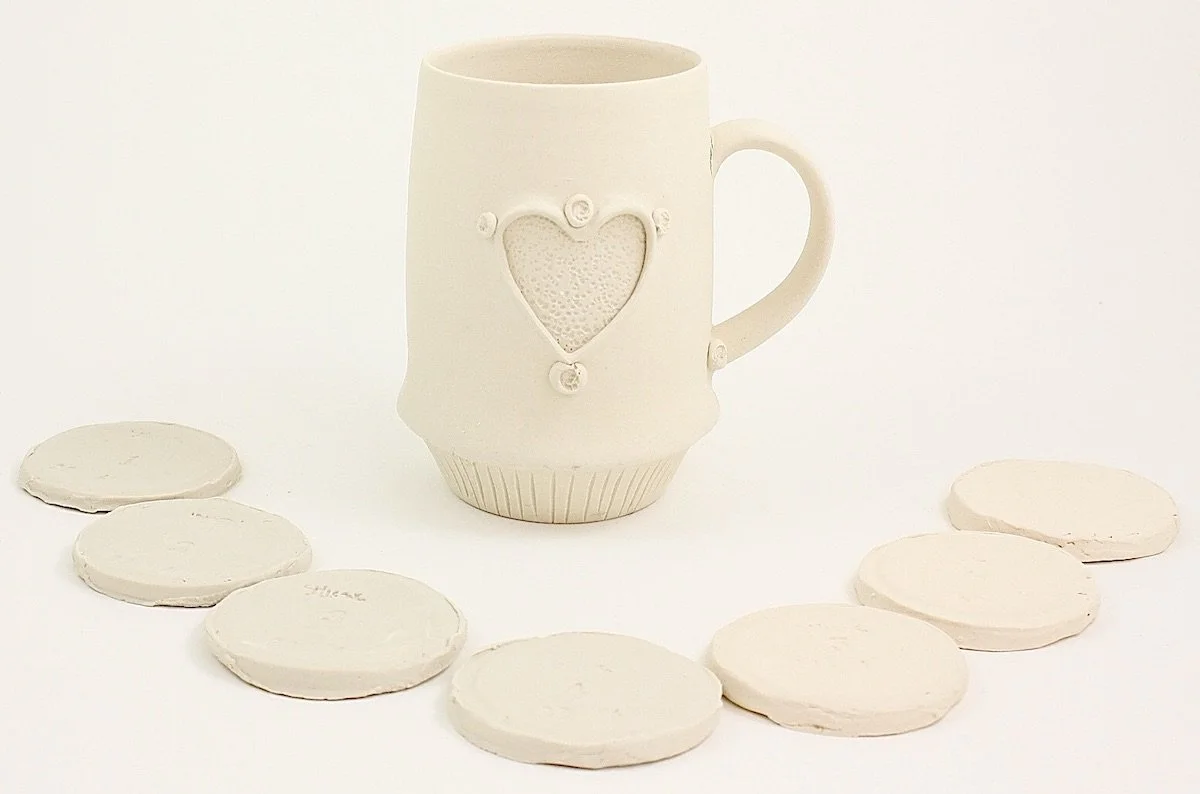A new body
Porcelain testing
Normally, most potters in the modern world buy their clay pre-mixed from a commercial clay manufacturer. Apart from a hard core few, gone are the days of digging it out of the ground near where you lived and processing it into something workable and durable. Some people still prospect their own clay body locally but let's face it, it's hard heavy work and, unless you can pay for a chemical analysis of what you have, it’s a cross-your-fingers kind of thing and takes testing to see if it will hold up to high temperatures. Nowadays, clay manufacturers combine commercially-mined raw materials and make plastic (moist, workable) clay bodies and that's what most potters work with in their studios.
From the first lab…
When I went to EKU for my BFA, I worked with Standard 153, a basic cone 10 clay that's often used in classrooms around parts of the United States. After graduating, I moved to whiter clay bodies from the same manufacturer and from other regional manufacturers such as Highwater Clays and Kentucky Mudworks clays. My work for the last several years has been a mix of Mudworks clays and Highwater clays both of whom have always been reliable but if I want my studio to really be exclusive and mine, developing my own clay body to do the things I need it to do instead of buying separate clays to fill those requirements is the next step in my professional development. For the same reasons I learned glaze chemistry, I also recently took a course in Understanding Clay Bodies from Ceramic Materials Workshop and developed my own recipe for a porcelain clay body.
Testing absorption and shrinkage of the clay body I liked the best…
Developing a clay body doesn't have the same visual punch as glaze testing. Most of the magic to see is in charts and numbers as I tested for shrinkage and absorption or in the tactile feel as I worked the clay samples to see which one performed to my satisfaction. Once fired, the pictures look the same, maybe some slight differences in tone. However, slight changes in the proportion of the mineral clay mix I started with to the feldspar, flint and frit mix, and the addition of plasticizing fillers made a huge difference in the studio, and more importantly the finished, fired product.
Coiling clay for plasticity testing…
When choosing to do either a stoneware body or a porcelain body, I opted for the porcelain body because I would be able to achieve a higher degree of white tone to set off the color palette I was hoping to develop. Stoneware clay bodies contain a mix of clays and flint and feldspar in a rough ratio of 80% clays to 20% flint/feldspar. Porcelain proportions skew towards 55% clays to 45% flint/feldspar. Because I was looking to work in cone 6, I would be adding a frit in a a small amount to bring the firing temperature down so I could achieve optimum vitrification.
What is vitrification? And why is it important?
Vitrification in ceramics is the transformation of the feldspar, flint and clays into a glass, a non-crystalline amorphous solid, and mullite structure, the muscle and bones of pottery. Vitrifying a clay body to maturity minimizes any pores in the fired clay body. This prevents water entering the clay body. Water in a fired clay body is problematic because if it freezes it will crack and if it gets hot, like when you microwave your coffee cup, not only is it too hot to handle but it also has the potential to break. The goal is to minimize the absorption of any fluids to prevent theses kinds of problems.
Most commercial clays rated for cone 6 have absorption rates that are much higher than optimum vitrification allowances, in the rage of 1-3%. The absorption range I was aiming for was less than 0.5%. Over the course of the CMW class I was able to develop a cone 6 porcelain body that felt great to work with either throwing or hand building and carving and had absorption rate less than 0.30%. Of course, I still have about 400 lbs of commercial clays I still have to get through before I make the investment in having my own recipe mixed for me but this plus my knowledge of glaze chemistry allows me to control both the clay and glaze and thus be confident that the functional work I make is safe and durable.
Shrinkage test results…
Absorption test results…






